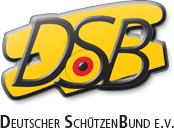Cortical reorganization of lower-limb motor representations in an elite archery athlete with congenital amputation of both arms
(Kortikale Reorganisation der motorischen Repräsentationen der unteren Extremitäten bei einem Spitzensportler im Bogenschießen mit angeborener Amputation beider Arme)
Despite their disabilities, top Paralympic athletes have better motor skills than able-bodied athletes. However, the neural underpinnings of these better motor skills remain unclear. We investigated the reorganization of the primary motor cortex (M1) in a Paralympic athlete with congenital amputation of both arms who holds the world record for the farthest accurate shot in archery (Amputee Archer: AA). We recorded brain activity during contraction of right toe, ankle, knee, and hip joint muscles in the AA and 12 able-bodied control subjects using functional magnetic resonance imaging. The results revealed that M1 activation was more widespread in the AA compared with control subjects during all tasks, and shifted towards the lateral part of the M1 during contraction of toe and knee muscles. We also conducted a motor mapping experiment using navigated transcranial magnetic stimulation. The M1 area receiving stimulation elicited motor-evoked potentials from the toe, lower-leg, and thigh muscles, which were larger in the AA compared with 12 control subjects. Furthermore, the AA's motor maps were shifted towards the lateral side of M1. These results suggest an expansion of lower-limb M1 representation towards the lateral side of M1, including the trunk and upper-limb representations, and an expansion of the area of corticomotor neurons innervating the lower limb muscles in the AA. This unique M1 reorganization could underpin the AA's excellent archery performance in the absence of upper limbs. The current results suggest that Paralympic athletes may exhibit extreme M1 plasticity, which could arise through a combination of rigorous long-term motor training and compensatory M1 reorganization for missing body parts.
Highlights
• We investigated cortical reorganization in an amputated archer who used his feet.
• Lower-limb motor representations were examined using fMRI and TMS mapping.
• M1 areas innervating lower-limb muscles were larger in the amputated athlete.
• The toe and knee representations were expanded towards the lateral part of the M1.
• Paralympic athletes have a unique and dynamic M1 plasticity.
© Copyright 2020 NeuroImage: Clinical. Elsevier. Alle Rechte vorbehalten.
| Schlagworte: | Bogenschießen Behindertensport motorische Anpassungs- und Umstellungsfähigkeit Bewegungsmerkmal Bein Neurophysiologie Rehabilitation |
|---|---|
| Notationen: | Behindertensport technische Sportarten |
| Tagging: | Parasportschießen Amputierte |
| DOI: | 10.1016/j.nicl.2019.102144 |
| Veröffentlicht in: | NeuroImage: Clinical |
| Veröffentlicht: |
2020
|
| Jahrgang: | 25 |
| Seiten: | 102144 |
| Dokumentenarten: | Artikel |
| Sprache: | Englisch |
| Level: | hoch |
